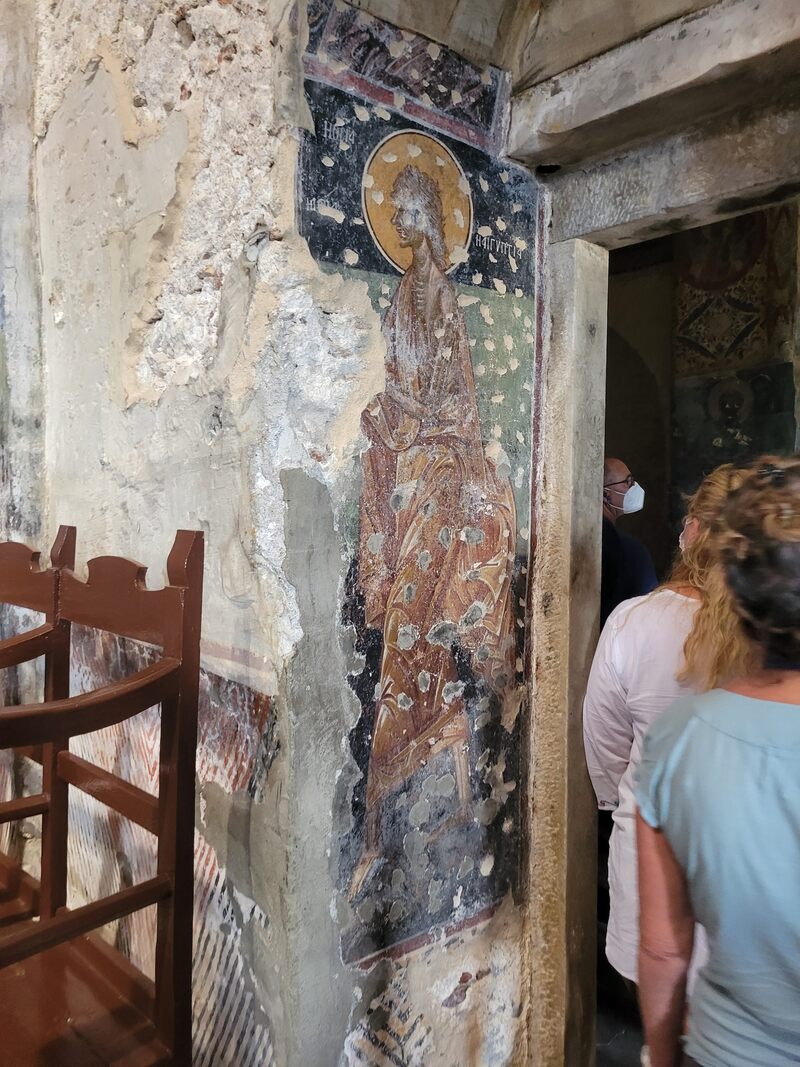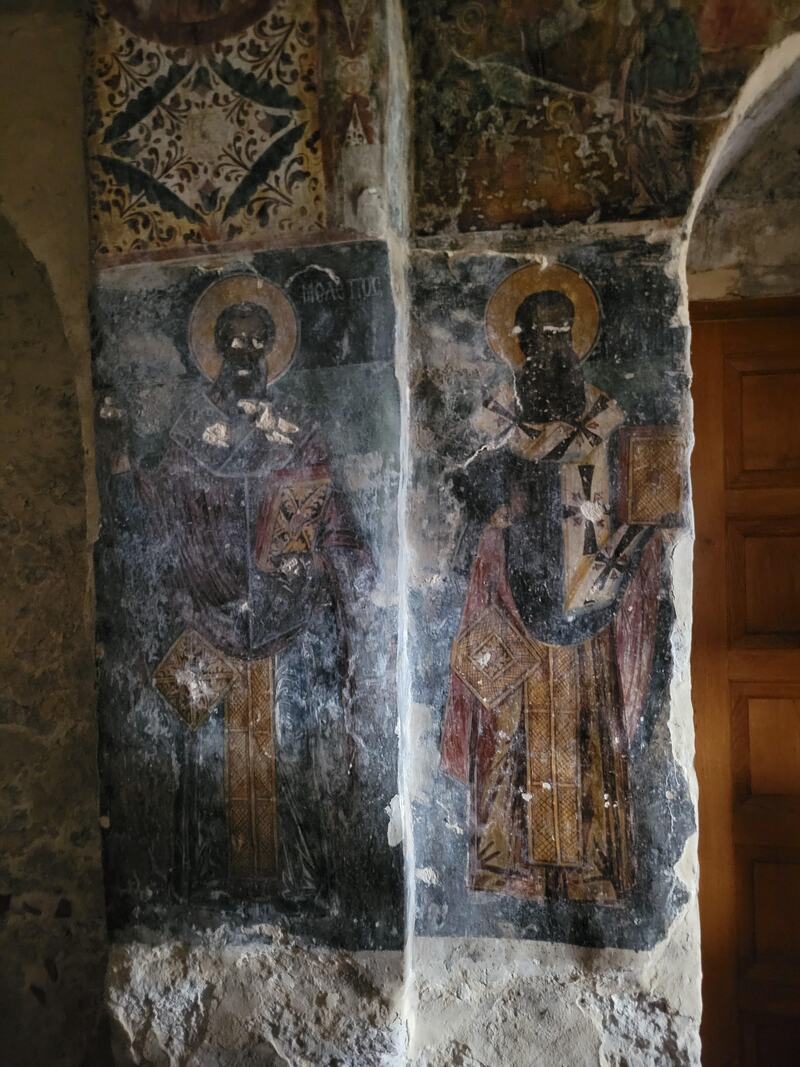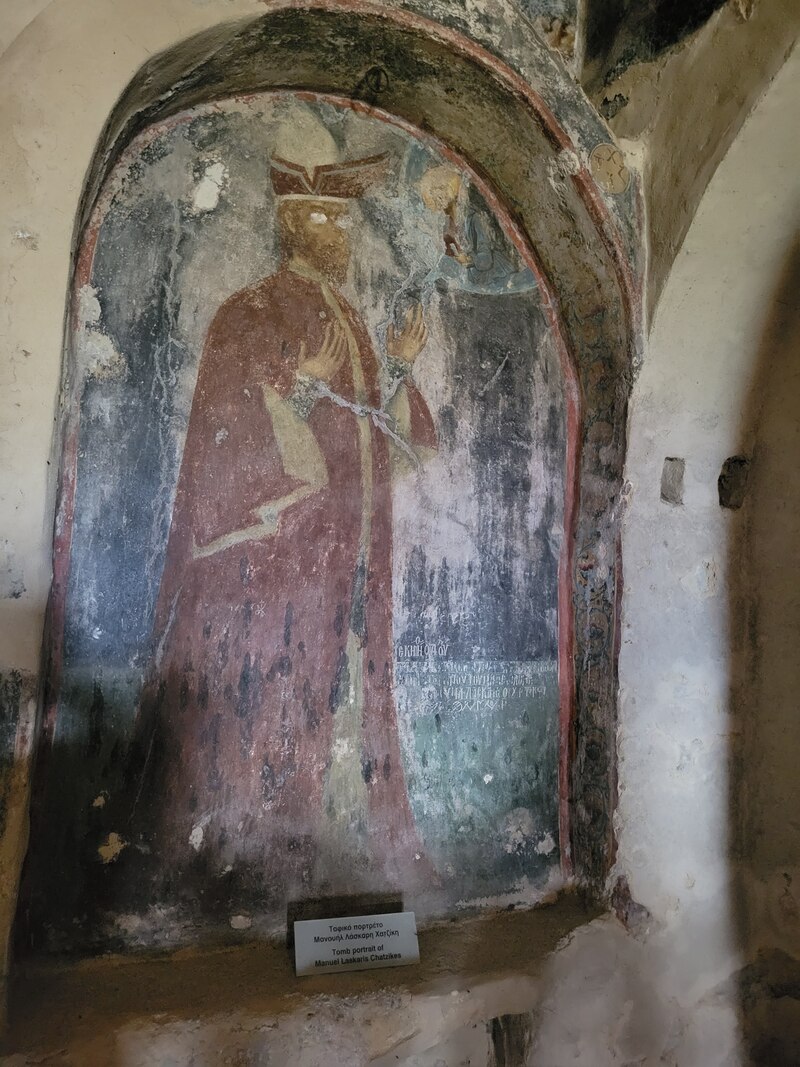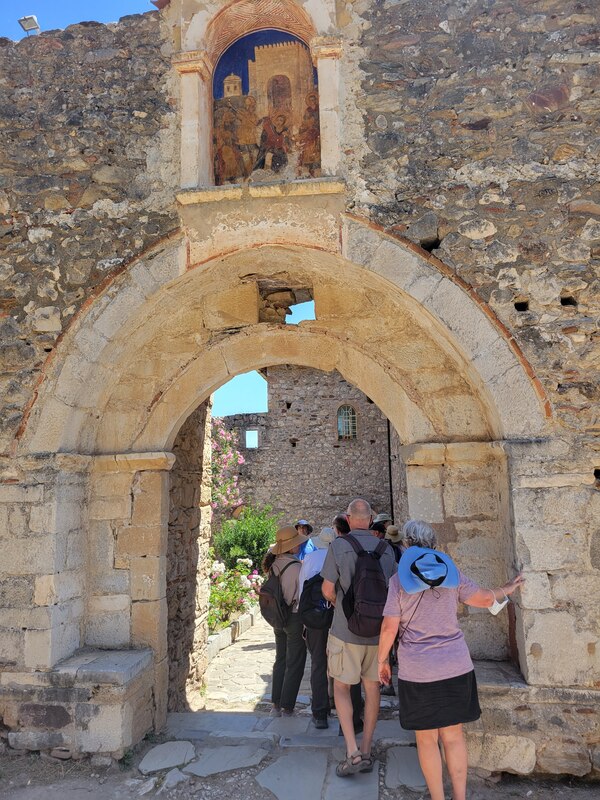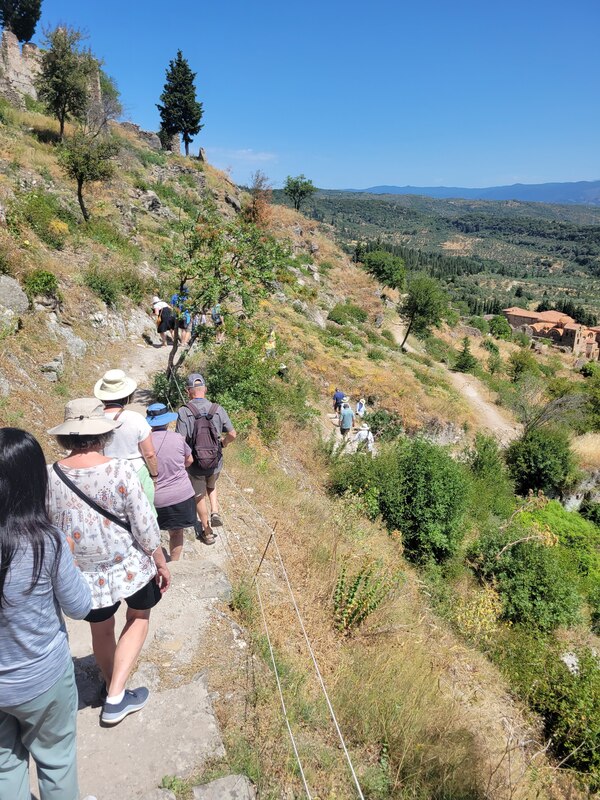Monemvasia to Nafplio.Day 9 was another early day for our group - on the bus at 8am for the drive to Mystras. Mystras is known as the most important Byzantine site in Greece, at one time its intellectual and cultural capital. It also became the final outpost of the Byzantine Greek society once the country began to fall under Ottoman rule. Sadly, the city surrendered to the Turks in 1460 and, after surviving under Ottoman rule, the new Greek king used the site as a quarry for rocks to fund other building projects instead, leading to some of its disrepair.
|
Byzantine fortified cities were often built with protection in mind. Mystras is no different, which is why it is built on the side of a mountain. We met up with our local guide, George, at the top of the vertical site - this way we only had to hike down instead of up! Thank goodness Christos was able to meet us at the bottom. George is the son of a priest and regaled us with stories about the churches and artwork of Mystras, as well as a demonstration of chanting in the Church of Theodorus.
In addition to its Byzantine art and architecture, Mystras is most famous for its churches. Only one church, Pantanassa, still functions at the site. Pantanassa houses the best frescoes in Mystras, as well as a number of columns and capitals "borrowed" from ancient nearby Sparta. (Mystras is only four miles from modern Sparta.) The frescoes inside also offer a remembrance of Ottoman rule. The invaders, George explained, scraped off the eyes of the saints depicted in acts of vandalism. The result is rather spooky today!
|
Services are still held by a small group of nuns from the Pantanassa convent, but they often take place before or after the site is open, so the nuns supplement their income with a small shop, where they sell linens and other handmade items. The linens were lovely, but I was particularly inspired by all my hotel room pieces to purchase my own wonderful Greek watercolor instead!
|
Full disclosure: By the end of our tour of Mystras, I was on the verge of heat exhaustion. Be sure to hydrate A LOT, especially when spending extended periods of time in the sun and heat!
We did a lot of downhill climbing in full sun. As Dafni cautioned in our daily itinerary, good hiking shoes, hats, sunscreen, and water were musts for Day 9. Shade was hard to find in Mystras.
I was a little out of it at lunch in modern Sparta thanks to the heat and sun (and probably, dehydration). I didn't even realize they had forgotten to serve me my lunch! We had a bit of free time after our group lunch to explore modern Sparta before heading back to the bus bound for Nafplio (and relax & nap in the air conditioning).
|
We arrived at Nafplio in the afternoon and were greeted at the car park above the city by our hoteliers, who helped us with the luggage. Mariana Hotel, set above Nafplio, was a real gem. Run by three brothers and their families, we were treated to unique rooms, fresh lemonade on their balcony overlooking the city and harbor, homemade breakfast, and lots of friendly smiles. The hotel set up is a unique assortment of rooms spread along a slope in different buildings, so we were all shown to our rooms individually. I had an interesting room in the main building that required two keys - one for the semi-private staircase!
|
Insider's Info: It's not a secret that Rick Steves tours are strenuous. Tour members are expected to pack light and be able to handle their own luggage. This is a requisite in Greece, too - don't count on friendly help at every hotel!
|
After some refreshment, Dafni led us on a quick tour of downtown Nafplio, ending in a wine and ouzo tasting. In addition to ouzo, we also had the chance to try the traditional (but less commercialized outside Greece) beverage, tsipouro. Tsipouro is a bit like Italian grappa and is made from the leftover grapes and residue from wine-making. After our tasting, we had the evening free to enjoy dinner and a group of us enjoyed dining al fresco on the square at I Gonia tou Kavalari. Then, it was time for a nighttime stroll and some real, Italian gelato. Nafplio was under Venetian rule in the Middle Ages and there is a strong Italian influence in certain parts.



